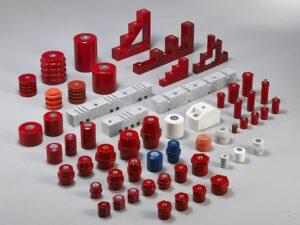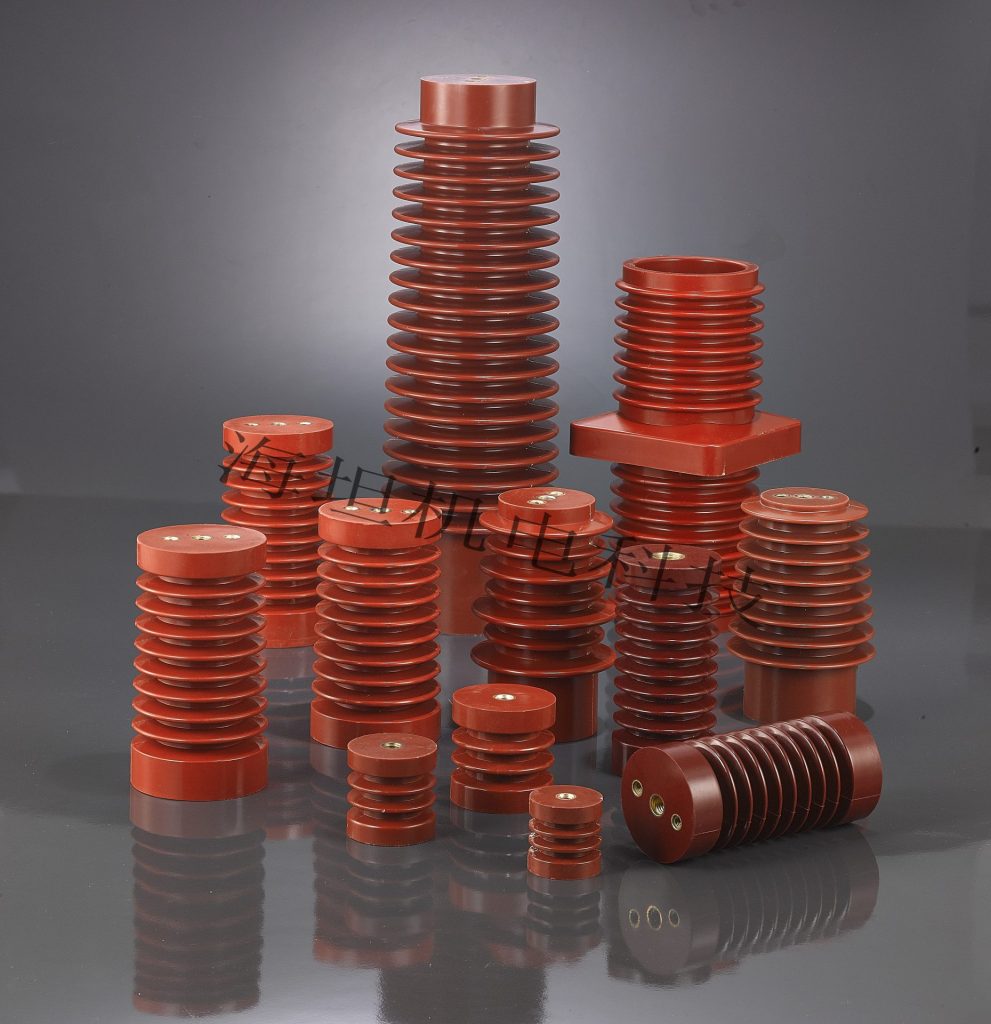The Ultimate Guide of New Energy Charging Pile Insulator
If you are operating or building an electric vehicle (EV) charging station, then you need to know what insulators are, and why they are needed in charge piles. and what they do. And why are insulators so important for charging piles? In this guide, I will take you through everything about charging pile insulators. We will deeply dive into what they do, how to protect the equipment, why they are critical to safety, and how to choose the right insulator. Let’s take a detailed look together!

Why insulators are crucial to new energy charging piles?
From the outside, the charging pile seems to be just a simple electric vehicle charging device, and you can’t see every component inside, but in fact, there are many technical details behind the charging pile, and insulators are an important part of it.
The insulators of the charging pile can prevent the circuit from short-circuiting and causing failures. They ensure that the important electrical components in the charging pile are insulated from each other, thereby avoiding all potential electrical safety problems.
So, why are insulators so important?
Ensure safety: Safety is paramount. Insulators act as a “barrier” to the current, effectively eliminating the risk of electric shock and protecting the safety of operators and maintenance personnel.
Prevent Electrical Failures: Insulators prevent electrical components in the load stack from touching each other, preventing dangerous electrical failures such as short circuits. Without them, electrical equipment can be damaged by accidental short circuits or even cause fires.
Extend equipment life: New energy piles are often required to operate in a variety of environmental conditions. High-quality insulators can withstand severe weather, moisture, and temperature changes, ensuring that the pile can operate efficiently and stably in a variety of environments.
The Role of Insulators in New Energy Charging Piles
Insulators are widely used in charging piles, so they must be very important to charging piles. So how do insulators work in charging piles? What are their specific functions?
Ensure user safety: Safety is paramount. Whether it is user safety or the safety of the pile itself, this is one of the most important functions of insulators. They prevent current leakage or external contact with live parts, greatly reducing the risk of electric shock and ensuring the safety of users and personnel using the pile.
Prevent electrical shorts: Insulators ensure that there is no inadvertent contact between high-voltage components inside the pile, preventing short circuits. This not only protects the normal operation of the stack, but also prevents safety hazards such as fires caused by short circuits.
Stable voltage: The battery stack must maintain a stable voltage output during charging. Insulators can provide electrical isolation between electrical components and prevent voltage instability due to current fluctuations, thereby improving charging efficiency and safety.
Protect sensitive components: Many components within the charge stack are highly sensitive and susceptible to current surges. Insulators play an important protective role by reducing damage to electrical components caused by excessive or unstable currents and extending the life of the stack.
How to choose the right charging pile insulator?
Choosing the right insulator is not simple. It needs to be selected based on the electrical load of the charging pile, the working environment, and the frequency of use of the equipment. Here are some factors you need to consider when choosing an insulator:
Size and Design: The design and installation space of the charging stack is limited. Therefore, when selecting insulators, we need to consider the size and design type of the insulators. Different types of charging piles have different internal structures. Therefore, it is necessary to select suitable insulators according to the specific size to ensure that the insulators can be properly installed inside the charging pile to give full play to their performance.
High temperature resistance: New energy charging piles are usually used outdoors, especially in the hot summer. The internal components of the piles will also generate a lot of heat in addition to the ambient temperature, so the insulators must be able to withstand high or low temperature environments. It is very important to choose materials that are resistant to high temperatures and UV rays so that the charging piles can still work stably in the summer.
Voltage Resistance: The current and voltage of the charging stacks are relatively high, so the insulators must have sufficient voltage resistance to ensure that there are no failures during long-term use.
Environmental Protection and Durability: It is necessary to select environmentally friendly and durable materials, especially for charging piles that are exposed to the outdoors for long periods of time. Materials with high corrosion and oxidation resistance can improve the reliability and service life of the equipment.
How can the safety of charging piles be improved?
Insulators play an important role in ensuring the safety and stability of charging piles. So how can we further improve the safety of insulators through regular inspection and maintenance?
Check insulators regularly: Inspect insulators periodically for wear or damage. After long-term use, insulators can age due to environmental changes or high-voltage use. Regular inspections can identify problematic insulators and replace them, ensuring the overall safety of the battery stack.
Select high quality insulation materials: Don’t sacrifice quality for low cost. Choose durable and reliable insulation materials to ensure that the charger can operate stably in a variety of environments.
Avoid overloading: Although modern charging piles are designed to operate at high loads, try to avoid long-term use at high loads to reduce the risk of overheating or aging of the equipment.
FAQS
Q: What is the service life of charging pile insulators?
A: The service life of insulators mainly depends on the materials used and the environment in which they work. Generally speaking, high-quality insulators can last for more than 10 years, but regular inspections are necessary.
Q: Can the charging pile be used in extreme weather conditions?
A: Generally speaking, the design of the charging pile has taken into account extreme weather conditions, such as high temperature, rain and snow, and it can work normally in these conditions. Of course, it is recommended that you use it according to the specific product manual.
Q: What should I do if there is a problem with the charging pile insulator?
A: If the insulator is found to be worn or damaged, you should stop using the charging pile immediately and contact a professional to replace the insulator to prevent electrical accidents.
Conclusion
Charging pile insulators are key components to ensure safe and efficient operation of charging stations. They not only protect equipment and extend service life, but also minimize safety hazards.
Choosing the right insulator can not only improve the performance and safety of the charging pile, but also provide a better experience for users. Remember to check regularly, choose high-quality materials, and make reasonable choices based on actual environmental needs.
Through this guide, you should have a clear understanding of the role, selection points, and safe maintenance of charging pile insulators. I hope this information can help you when choosing and maintaining charging piles!
--- END ---
© Copyright 2024 China Haitan Electromechanical Technology Co., Ltd. All rights reserved.SUPPORT BY:JUNJ Privacy Policy

 E-mail: shay@cnhaitan.net
E-mail: shay@cnhaitan.net No. 20 Lingyun Road, Dongfeng
No. 20 Lingyun Road, Dongfeng 
